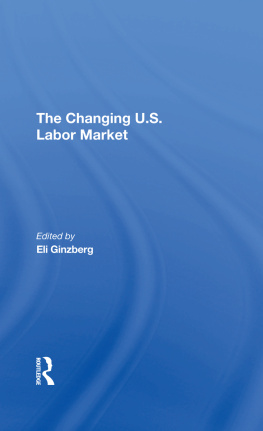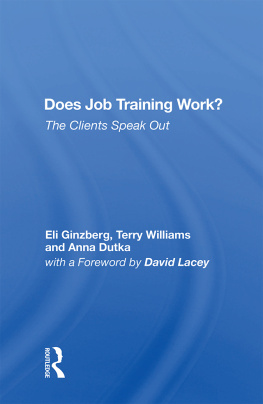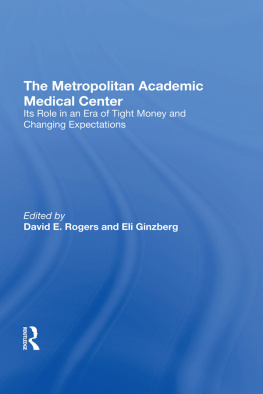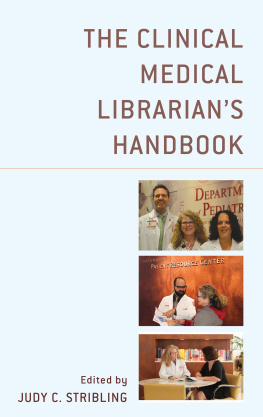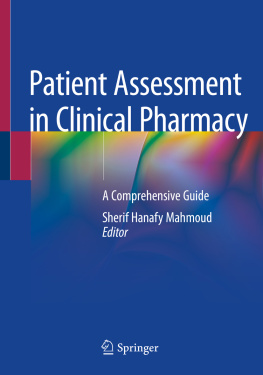Urban Medical Centers
Urban Medical Centers
Balancing Academic and Patient Care Functions
Cornell University Medical College Tenth Conference on Health Policy
Edited by
Eli Ginzberg
First published 1996 by Westview Press, Inc.
Published 2019 by Routledge
52 Vanderbilt Avenue, New York, NY 10017
2 Park Square, Milton Park, Abingdon, Oxon OX14 4RN
Routledge is an imprint of the Taylor & Francis Group, an informa business
Copyright 1996 Taylor & Francis
All Rights reserved. No part of this book may be reprinted or reproduced or utilised in any form or by any electronic, mechanical, or other means, now known or hereafter invented, including photocopying and recording, or in any information storage or retrieval system, without permission in writing from the publishers.
Notice:
Product or corporate names may be trademarks or registered trademarks, and are used only for identification and explanation without intent to infringe.
A CIP catalog record for this book is available from the Library of Congress.
ISBN 13: 978-0-813-32883-6 (hbk)
Contents
, Eli Ginzberg
, Bruce Siegel
, Kenneth I. Shine
, H. Richard Nesson
, David B. Skinner
, Leo Henikoff
Richard D. Krugman
, Stuart Bondurant
, William N. Kelley
, Jerome H. Grossman
, Stanley S. Bergen
, Eli Ginzberg
, Robert Michels
Guide
Urban Medical Centers

David E. Rogers 1926-1994 (Photo by Morris Warman, New York)
At the time of his death, David Rogers had completed the planning for this conference, invited the participants, and structured the topic. It is most appropriate that the conference be dedicated to him, and once again give us a chance to remember sadly, but fondly, the immense impact he had on this institution as well as the profession and the nation. This book is in his memory.
Eli Ginzberg
In planning this year's Cornell University Medical College health policy conference, Dr. David Rogers and I almost instinctively chose as the theme, the future of urban academic medical centers. Although it had been the subject of the previous year's conference, the profound and urgent impacts on urban academic health centers (AHCs) of stresses and strains in the U.S. health care system left no alternative but to revisit the subject and open up some new lines of inquiry. Specifically these related to the challenges to academic and patient care functions posed by structural changes, altered financing systems, declining clinical income, and uncertain funding for medical education and research.
The chapters that follow comprise the presentations by several distinguished leaders of academic health centers and a chapter entitled "Perspectives," in which I have reflected on the interaction between the presenters and the various participants in the conference sessions. Among the latter were several urban medical school faculty members with administrative responsibilities; representatives of the health insurance sector; and selected health foundation executives. The title, "Perspectives," rather than the more usual "Summary," suggests the difficulty I had in identifying a distinct set of conclusions to which the thirty-odd participants would subscribe.
The designation "Perspectives" underscores my convictionwhich I believe was shared by most of the participantsthat given the scale and scope of the changes affecting the urban AHCs and the diversity of the responses they are mounting to the threats and opportunities confronting them now and in the future, it would be misleading to interpret their current efforts as other than exploratory forays in the search for new and winning strategies. The directions they will take are just coming into view and their testing and refinement will preempt the best efforts of the AHCs for some years to come.
In short, this volume does not presume to be anything more than a report, as of early 1995, of the different ways in which various urban AHCs are seeking to reposition themselves in order to protect and advance their primary missions of education, biomedical research, and sophisticated patient care in an era in which the financing of medical education faces cutbacks, funding for research has plateaued, and in-patient care revenues, especially practice plan income, are clearly declining.
Each of these represents a challenge that the AHCs cannot afford to ignore. Together, they have clearly commanded at least early institutional attention. The individual chapters describe a miscellany of approaches that the AHCs have begun to develop to ensure not only survival but, more important, a place in the health care sector from which they can continue to make significant contributions to the advancement of American medicine.
To acquaint those attending the conference with the rich menu of strategies and tactics that selected AHCs are pursuing, we invited the chief executive officers (CEOs) of seven AHCs in the Northeast, Middle Atlantic, Midwest, and Rocky Mountain regions to prepare papers outlining their current and prospective efforts. We also requested two former CEOs of teaching hospitals in the South and on the West Coast to develop presentations.
The conference was further enriched by the presence as discussants of a number of current CEOs of AHCs in the East and Midwest who added accounts of their experiences and perceptions to the lively day-and-a-half dialogue among the group.
From the contributed papers, the reader will gain some firsthand knowledge of the substantive bounds of the wide-ranging discussion. Those who persist to the end will be able to decide for themselves whether the perspectives that I, in the role of chair, derived from the discussion conform with their impressions of the facts and formulations emphasized by the conferees.
1
Overview
Bruce Siegel
New York is on the eve of what is likely to be a wrenching transition in its renowned health care system, a system unmatched for the volume of care and for the research and teaching it performs in a setting of pervasive poverty and societal ills. Now it is about to be "reformed" by competition, managed care, the downsizing of government, and, in particular, the downsizing of government financial obligations. Only yesterday the new governor of New York State unveiled a plan to reduce Medicaid funding for the city by several billions of dollars and to move a million residents into managed care in a matter of months. I doubt that we will ever again see changes quite as dramatic as these.
New York is usually seen as a bellwether for the rest of the country, but in this case the situation is reversed; New York is playing catch-up. Our job at the Health and Hospitals Corporation is to see whether we can manage the abrupt transition. For the academic health centers, I think that a significant shift will be required in the balance between patient care and teaching priorities. Many of the conferees have had experience in dealing with this environment and they can apprise us of the adjustments teaching hospitals are making to the advances of managed care, vertical integration, networks, and alliances, all of which are supposed to make for leaner, more effective operations. First and foremost, they can inform us how to operate in the capitated future that we face.


